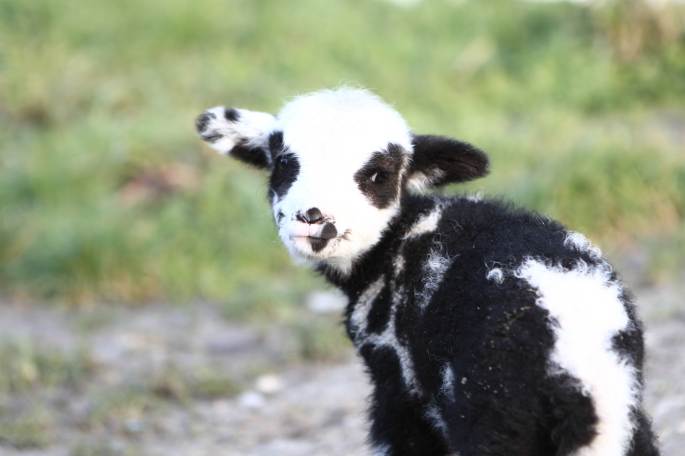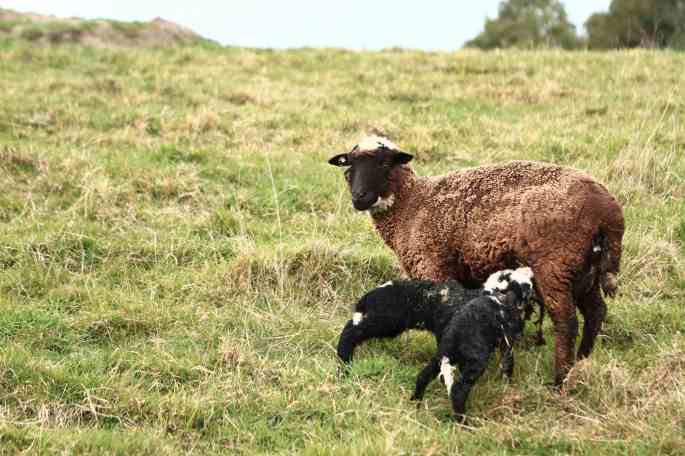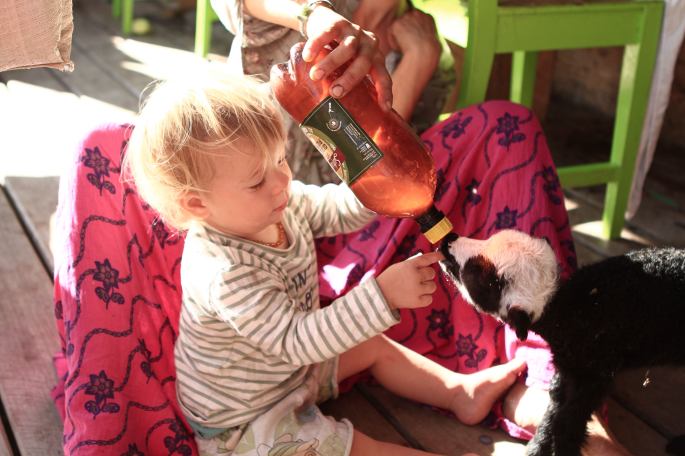Baby is the latest lamb we are rearing, and so far she is thriving. In a month or two, lambing will kick off. One thing farmers have to deal with is orphan lambs. They have a few options, including leaving them to it (if they are not found dead already), putting them on a ewe that has lost her own lamb (this involves locking them in a pen together, skinning the dead lamb and putting that skin on the orphan lamb), rearing them or giving them away (to be reared by other people).
When we first moved here, we got to rear an orphan lamb, then over the last 3 years, we’ve picked up lambs from our own flock, usually rejected by their mum or too weak to follow (as in the case of Geegee).

Sadly not all our lambs survived into adulthood, and we have learned through trial and error how best to nurture them. Some, like Baby, are only a few hours old when they end up in our care. Their first few hours of life, like all mammals, are crucial. We can’t know for sure if they had colostrum for example. And then, the milk we feed them (raw cow’s milk or milk powder) is completely different than that they would be getting from their mom. All this has an impact on their digestive and immune system. For an animal so small and so dependant one one food the balance between health and sickness can shift very fast.

This is the protocol we follow. We are always fine tuning it but so far have had good results and healthy lambs.

If the lamb is a few hours to a day old, we give them colostrum (we freeze our cow’s colostrum in 500ml and 2L bottles) for a day. For lambs one 500ml is usually enough. we feed them little but often. In the case of Baby, that meant up to 6 or 7 times, just letting her suckle until she wouldn’t take the bottle anymore. After a feed, we pat and cuddle, just like the mum would. We’ve had some pretty cold nights, so for the first week Baby slept in a box in our room (we only have one room…). From day 2 onwards, we feed raw cow’s milk (our preference over the powdered stuff). The lamb’s digestive system and its digestive enzymes will take a few days to get accustomed to this different milk, so it’s really important to watch its poos. they should be well formed, soft but not runny. Little marbles is good too, what to watch out for is scouring (what we call diarrhoea in humans). Scouring is dangerous because they are losing a lot of water in the process and can get dehydrated quite fast. If a young lamb (or calf and I guess kid goat) is scouring, you have to act fastand look into supplementing with electrolyte and seeking help from a vet). The poos will be the colour of mustard and get darker once it starts eating grass.
If we notice the poos are on the runny side, we add a bit of strained milk kefir to the milk ration, usually for a couple of days until the stools firm up. I try not to mix up milk sources too much and use only one kind (either the cow’s milk or the powder), especially in the beginning, again to let the lamb’s digestive system get up to speed.
After day 3 or 4, the lamb should start getting really lively, doing little jumps and runs, calling and following you everywhere. And getting up on sunrise for its feed (no need for alarm clock in our house). At that stage, we feed our lambs about 4-5 times a day, about 200ml per feed. It’s more often and less milk per feed than recommended on the packet of powdered milk, but our lambs are a bit smaller than the average commercial breed and also we’ve noticed they do better that way. Too much milk in one go can upset their tummy, the same way it would upset ours to only eat once or twice a day but a huge meal (we do that on special occasions but we all know how it feels the next day…). In the first week, we pay close attention to the milk temperature (ideal is 38C), as the lamb won’t drink it if it’s too cold or too hot and it’s harder to digest.
It’s also quite important to make sure the bottle and teats are clean (I rinse everything in cold water straight after a feed and at least once a day thoroughly clean with hot water although ideally we should probably clean hot after every feed).
We also start letting them out to nibble and browse. They love following us around and exploring.
By the end of the second week, they should be thriving. I still check for poos and pees, and leave a mineral mix out for them to lick if they feel like it. It’s a mix of dried seaweed powder, sea salt, dolomite and Diatomaceous earth. They seem to love it and will seek it out when they need it.
Although I haven’t done it for our previous lot of pet lambs (they are about 6 months old now), I also give our young animals a herbal drench on a full moon or if I notice they poos are getting runny again. I use this product which has herbal tinctures as well as homeopathic remedies in it. It’s quite expensive though so I am planning on making up my own at some stage.






